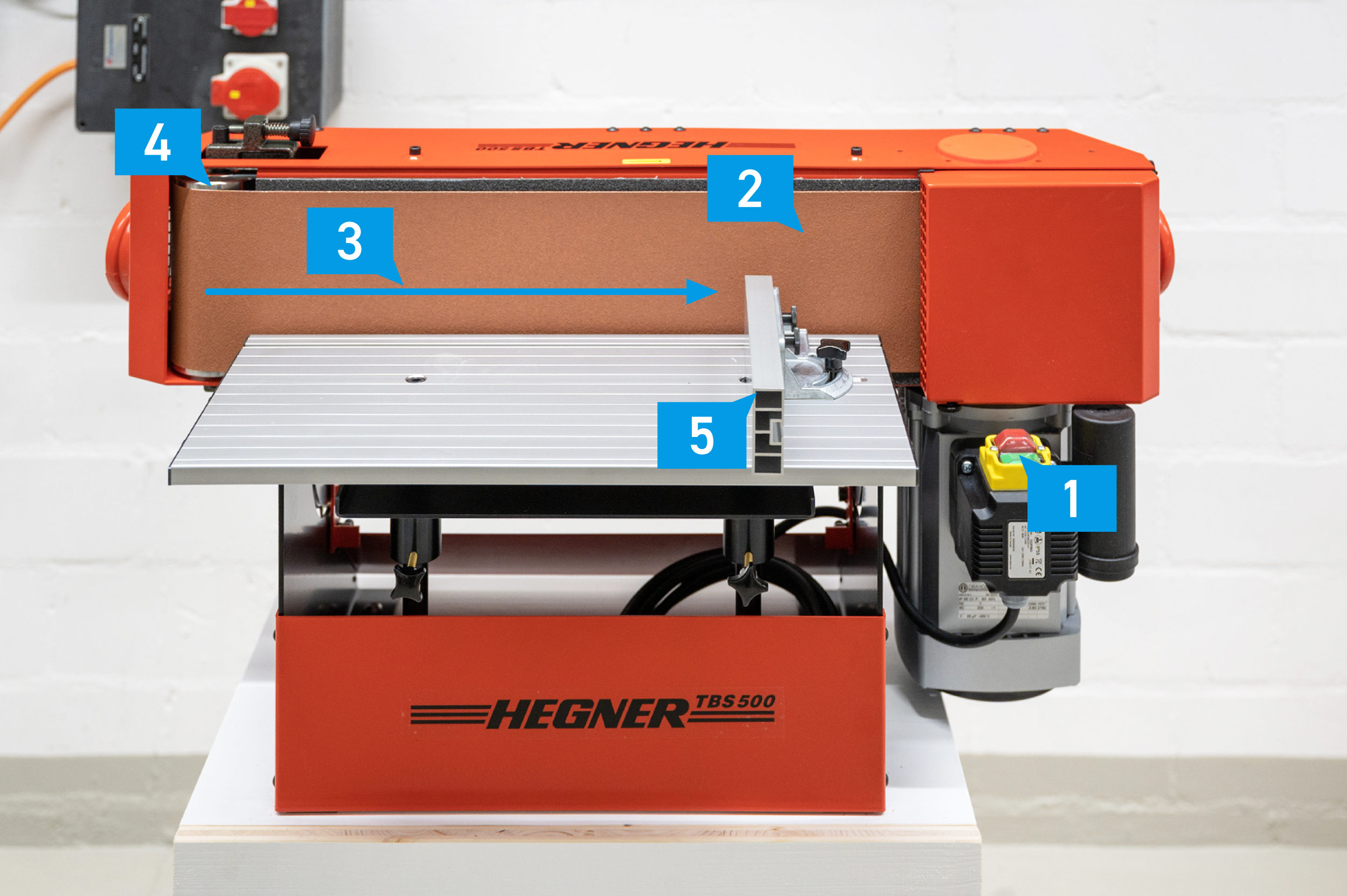The belt sander provides a fast and efficient way to clean up the edges of boards and shape objects with a convex curvature that can not be sanded on the disc sander due to size limitations.
In model building, the belt sander is primarily used to clean up the edges of landscape models and sand parts for facades or similar larger-scale elements to final dimensions. The tilting function of the machine allows for the precise sanding of miters to join components seamlessly. Small parts are not to be used on this machine due to the force sanding exerts on the workpiece, making work holding difficult.

#1 Power switch
#2 Sanding belt
#3 Belt direction
#4 Spindle
#5 Miter Gauge
Do not sand the short edge of a workpiece on the belt sander. The right, and far safer option, for this task is the disc sander!
Always support your workpiece on the machine table, and use only light pressure to avoid heat accumulation. Remember: the machine should do the work for you! The belt sander is ideal for removing the last .5mm material; anything more than that should be removed with the bandsaw.
The belt sander is used for sanding the edges of boards and models. As with any sanding machine, we use it to remove the last millimeter, clean up cuts made with other machines, and not remove substantial amounts of material. Utilizing the miter gauge as a backstop adds an additional safety layer and prevents workpieces from flying off the table.